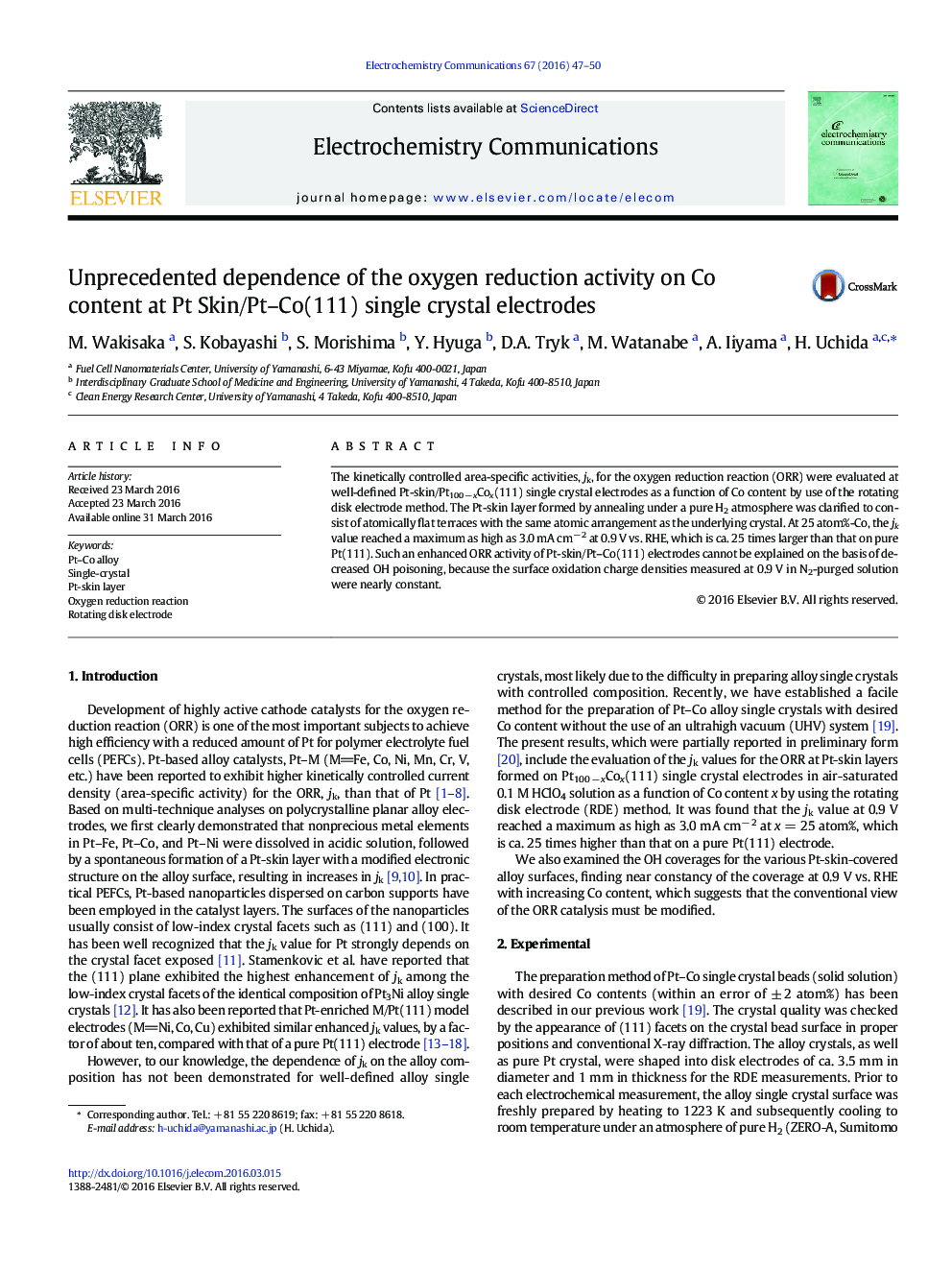| Article ID | Journal | Published Year | Pages | File Type |
|---|---|---|---|---|
| 178640 | Electrochemistry Communications | 2016 | 4 Pages |
•Pt-skin/Pt–Co(111) single crystals exhibited extremely high ORR activity, jk.•Pt-skin had atomically flat terraces with the same atomic arrangement as the bulk.•Maximum jk at Pt-skin/Pt0.75Co0.25 was 25 times higher than that at pure Pt(111).•The enhanced ORR activity cannot be explained by decreased OH poisoning.•An alternate ORR model must be developed to explain all of the present results.
The kinetically controlled area-specific activities, jk, for the oxygen reduction reaction (ORR) were evaluated at well-defined Pt-skin/Pt100 − xCox(111) single crystal electrodes as a function of Co content by use of the rotating disk electrode method. The Pt-skin layer formed by annealing under a pure H2 atmosphere was clarified to consist of atomically flat terraces with the same atomic arrangement as the underlying crystal. At 25 atom%-Co, the jk value reached a maximum as high as 3.0 mA cm− 2 at 0.9 V vs. RHE, which is ca. 25 times larger than that on pure Pt(111). Such an enhanced ORR activity of Pt-skin/Pt–Co(111) electrodes cannot be explained on the basis of decreased OH poisoning, because the surface oxidation charge densities measured at 0.9 V in N2-purged solution were nearly constant.
Graphical abstractFigure optionsDownload full-size imageDownload as PowerPoint slide
